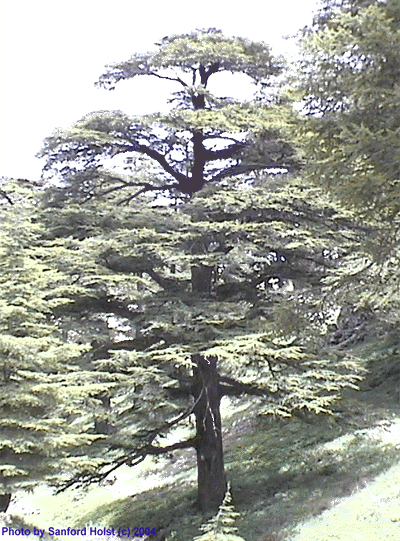Ezekiel 17:22-24
Psalm 92
2 Corinthians 5:6-10
Mark 4:26-34
Ezekiel, the Psalmist, and the author of the Gospel of Mark each invoke the image of a large tree as a symbol of the flourishing of God’s presence among the Judeans and among Christians. This tree is a symbol of God’s stability, faithfulness, and perseverance as the One who cares for God’s people, providing a safe haven of shade and protection for those who seek refuge in God.
Recently, I have been reading about a form of meditation practiced by Tibetan Buddhists, in which they envision a mythical jeweled tree that contains the Buddha and all of the great bodhisattvas (saints), scholars, and teachers of the tradition residing and radiating light, energy and compassion to all beings. Meditation upon this tree is meant to provide inspiration on the path to enlightenment. In his discussion of this jewel tree, the former Tibetan monk and scholar of Buddhism Robert Thurman invites his readers to place their own conception of the most enlightened being(s) into their own jewel tree. For me, this involves imagining Christ at the crown of the tree, along with all of the angels and saints sitting joyfully upon the branches, radiating light, love, and inspiring me and others on the path of salvation.
Although this tree is a mythical, contemplative exercise, it draws upon natural, physical images. For the societies of the ancient near East, including Judah, the cedars of Lebanon provided the most highly prized wood in the known world. They were renowned for their beauty, strength, and size, and valued for use in constructing temples and palaces. Thus, Ezekiel imagines the LORD taking the topmost portion of one of these cedars and planting it upon the mountain heights of Jerusalem, as a symbol for the way in which Judah was called to be a light to the nations, to bless every nation of the earth, and to proclaim the faithfulness, oneness, and unity of God to all.
Similarly, Jesus uses the imagery of a tree to speak about the kingdom of God in parables. It grows in ways that we “know not how,” yet it becomes a place of refuge for all people. This is a beautiful image for the Church as well. As Christians we are called, with the guidance of the Holy Spirit, to build a Church in which all beings and people of all walks of life can find refuge within the branches and shade of God in God’s Church.
Finally, this natural, physical imagery is important for tying the reading from 2 Corinthians into this meditation upon a Christ-jewel-cedar-salvation-tree. Read in one way, it could appear that this is one of those writings from Paul in which he denigrates the body, but I do not think Paul intends for us to interpret his words in this way. First, his vision of the coming kingdom is so powerful and immediate for him that he longs to leave behind this current state of existence, including especially the sufferings of the body. But I believe Paul’s sayings that seem to denigrate the body must be read in light of his belief in the exquisite joy of the kingdom of God: what we experience now is simply like so much chaff in comparison to the fulness of the kingdom (cf. 1 Cor 2:9). Secondly, in the same letter, Paul proclaims his faith in the resurrection of the body (cf. 2 Cor 15). He cannot mean, therefore, that the body is evil, but rather Paul wants us to see and experience now – in the body – what is beyond this current “body of death” (Rom 7:24).
The contemplation of the Christ-salvation-tree is one way for us to envision what our current life and our Church can be here and now in the light of Christ’s love and judgment. It also helps us to think about judgment, a word fraught with anxieties and fears of punishment, in a new way. Rather than being subject to the angry demands of God, judgment is simply the revelation of our heart’s true desire, which is revealed in the light of Christ. Thus, to place oneself before the Christ-salvation-tree is to be open to seeing ourselves for who we truly are, to knowing how our thoughts, desires, intentions, words, and actions either are or are not leading us closer to the heart of Christ; or as Paul states it, “whether good or evil.” Either way, we are all called joyfully to take our place in the tree of God’s salvation, in the process hopefully becoming ourselves one of those leaves “for the healing of the nations” (Rev 22:2) of which John speaks in the book of Revelation.



